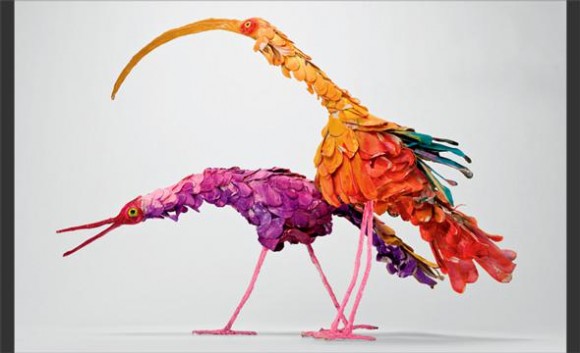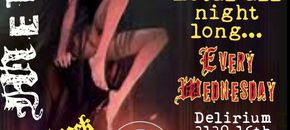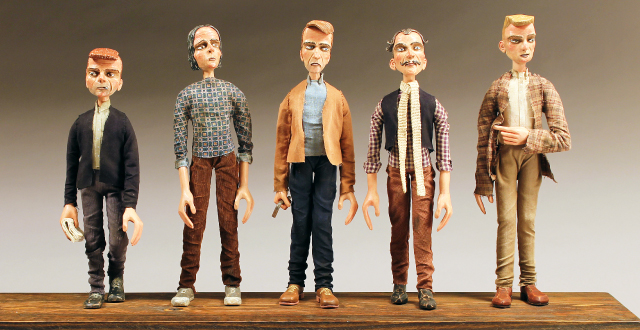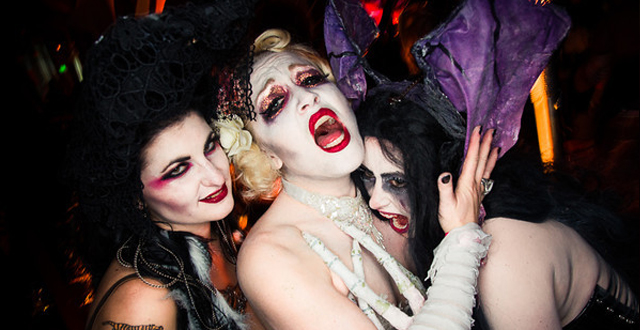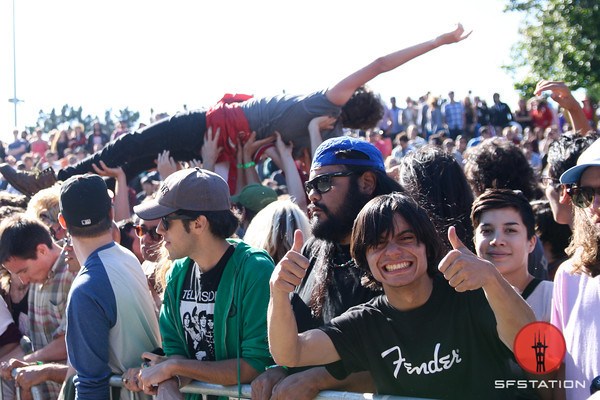Parallels Between Avian and Human Behavior Animated at YBCA
In a new exhibition, Swedish-born collaborators Nathalie Djurberg and Hans Berg have together hatched a series of animated films and sculptures inspired by the winged flocks that roam the skies.
The sculptures created by Djurberg (80 in total), recall the vibrant plumage and the diversity of bills and beaks and shapes and sizes of the hundreds of avian species that inhabit Papua New Guinea.
Akin to humans, birds possess an elaborate set of rituals that regulate their interactions with other members of their species, especially in relation to courtship: a potential mate can be won or lost depending on the caliber of a stage-performers’ histrionic act–an indicative sign of mate quality and reproductive fitness.
Males of the 20 bowerbird species, for example, go to a lot of trouble to build elaborate roosts composed of complex arrangements of sticks, twigs, leaves or other objects that may share a specific commonality like color.
Djurberg recognizes that birds and humans, separated by millions of years of evolution, nevertheless still uncannily share behavioral similarities–except that the primordial visceral emotions that birds openly display, in humans, lie hidden just below the surface interred in the unconscious mind.
Using clay, and the technique of stop-motion animation, Djurberg and Berg (who provides the accompanying musical soundtrack) have created five short animated films that illustrate with character-driven narrative the psychological insights Djurberg has gleaned from ornithology.
Through these films and a series of figurines that parade and ridicule rituals and stereotypes, human behavior is drolly demystified; these powerful works induce a mental molting, which allows for a fresh perspective and insight into the ersatz nature of human custom.
See The Parade: Nathalie Djurberg with Music by Hans Berg through Jan 27, 2013 at the Yerba Buena Center for the Arts.
